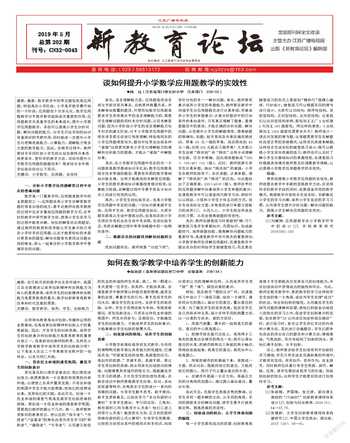The cultural representation of symbolic elements in environmental art design
胡宾
1. The important role of symbolic elements in environmental art design
To apply symbolic elements in environmental art design, it is necessary to understand the important role of symbolic elements in environmental art design, so as to further improve the teaching efficiency of environmental art design. Firstly, in the process of environmental art design, symbolic elements can be used to express the corresponding ideas. In the teaching of environmental art design, the use of symbolic elements can not only fully demonstrate the significance of environmental value teaching, but also simplify the environmental art design and prevent the conflict between some practical works and theoretical thinking. For example, in the design of the teaching building, we should know that the teaching building is the main front for students to acquire knowledge, so we need to highlight the knowledge and cultural connotation of the teaching building, so many teaching buildings will put part of the statue of cultural celebrities, or through the motto to show the connotation of the design. The use of symbols can express the concept of environmental art design. With the help of the process of selecting symbolic elements, designers can also show their artistic skills and ideas. Secondly, symbolic elements can promote the emergence of various environmental art design. In a very long time ago, environmental art design has adopted very simple symbolic elements. At the very beginning, symbolic elements that are easy to be accepted by people are adopted for emotional communication. Symbols are derived from specific living habits of human beings and can be regarded as presentation elements of other things. Symbolic elements themselves have certain cultural connotations, which provide a lot of choices for environmental art design, allowing various forms of environmental art design and promoting the development of environmental art design.
2. Representation of symbolic element culture in environmental art design
2.1 environmental art design itself is a symbol
Environmental art design condenses into a simple symbol, for example in Buddhism, glittering Buddha actually is a symbol of Buddhism, so the designers in the temple in the process of design, the 18 Luo Hantu design into the wall of the temple, and the roof tile design into several small figure of Buddha, the buddhist used to worship the futon of course design for pieces of lotus, at the same time in the middle of the temple has designed a large golden Buddha, let the buddhists and ordinary people into the temple, you can immediately feel very strong buddhist culture, especially the big Buddha in communication design can let the buddhists and Buddhism, Let a person feel god Buddha come to earth.
2.2 implicit symbolic elements in environmental art design
There is no fixed connotation in most of the symbolic elements, and the methods adopted are flexible and diverse. Designers often use this type of symbols to implicitly express the design intention, and make bold attempts to use symbols. There are many indirect methods to use symbolic elements in ancient Chinese architecture. For example, suzhou garden is a representative design of ancient garden architectural design, suzhou garden art design in ancient China has a very big impact, and a long history. The symbolic meaning of the lion forest in the humble administrator's garden has gone beyond the meaning of the garden's name, which implicitly shows the ancient water town culture and jiangnan life. This kind of behavior of implicit expression of symbols can often be seen in the ancient garden design, often use rockery and wooden bridge as decorations, show the quiet and elegant garden.
3 conclusion
In general, in the current environmental art design, the majority of designers need to fully carry out further exploration and flexible use of symbol elements, and strive to use a variety of traditional symbol elements and modern symbol elements in the teaching of environmental art design, to convey a unique design concept. In addition, the cultural characteristics of symbolic elements fully meet people's aesthetic requirements and promote the efficiency of environmental art design teaching.
Reference:
[1]zhang yong. Environmental art design of traditional tea houses in China [J]. Fujian tea,2018,40(10):98-99.
[2]Gong xia. Research on the application of tea element symbols in environmental art design [J]. Fujian tea, 2008,40(10):449.
[3]Chen jia. Application analysis of traditional folk art in modern environmental art design [J]. Building materials and decoration,2017(47):80.

